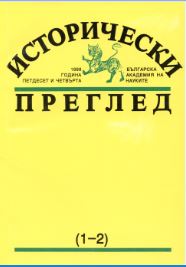
Concepts of security from a perspective of political science
Security is one of the most basic needs of human beings and has become one of the fundamental issues not only for people but also for the states. Security has emerged within the human history and it is one of the fundamental concepts of the discipline of international relations. Many studies have been carried out into the concept of security in the discipline of international relations and many definitions of this concept have been offered in the conceptual and theoretical framework of these studies. However, in the literature there is no one, commonly accepted definition of security. Since security has a dynamic structure, the concept of security has also changed cyclically and maintained its existence. Unique opportunities for the concept of security emerged particularly during and after the cold war, arousing interest of many disciplines and theorists. The concept of security, which continues its existence today, has changed and deepened, confronted with different threats. In our study, firstly, the concept of security will be defined and its analysis will be performed by associating it with humanity and its history. Afterwards, it will be explained how the change in the system transformed the concept of security as conceived in terms of the critical theories developed in the cold war period and later.
More...





